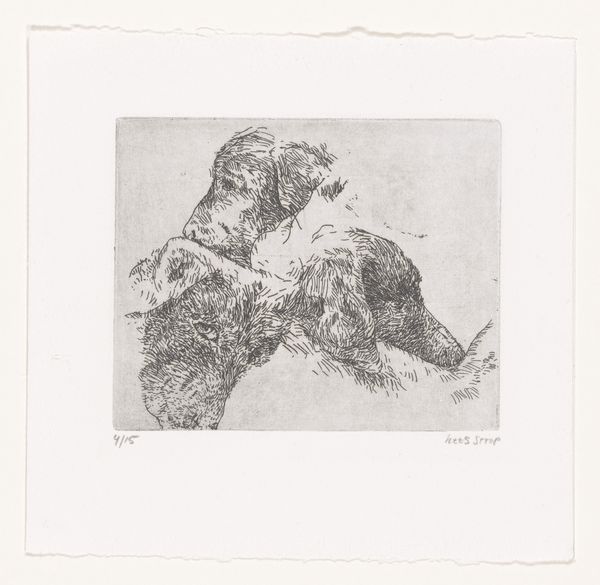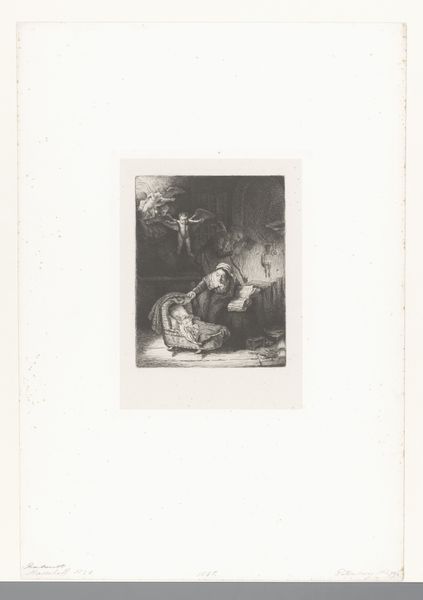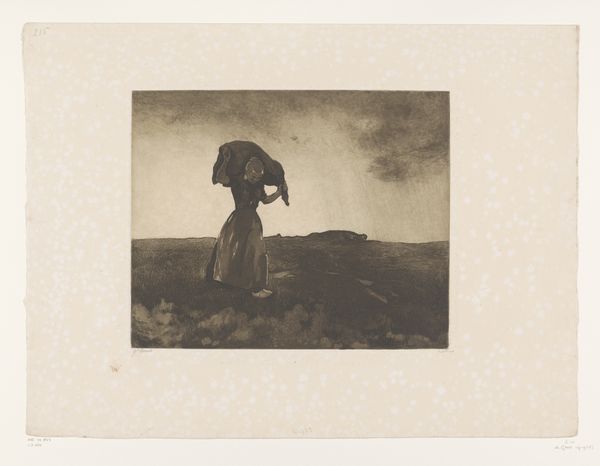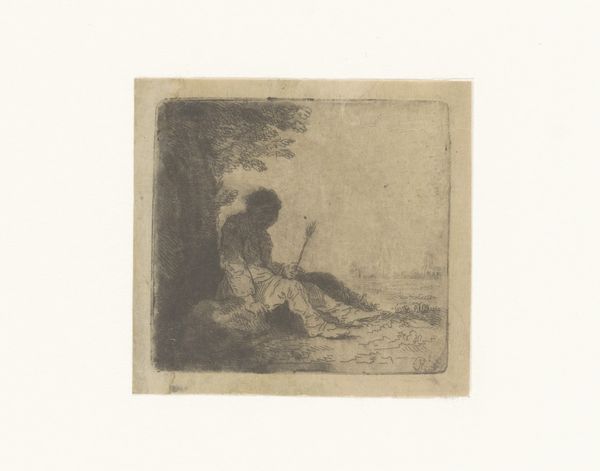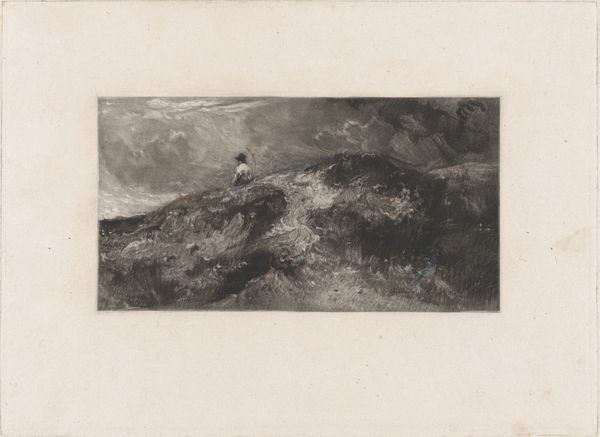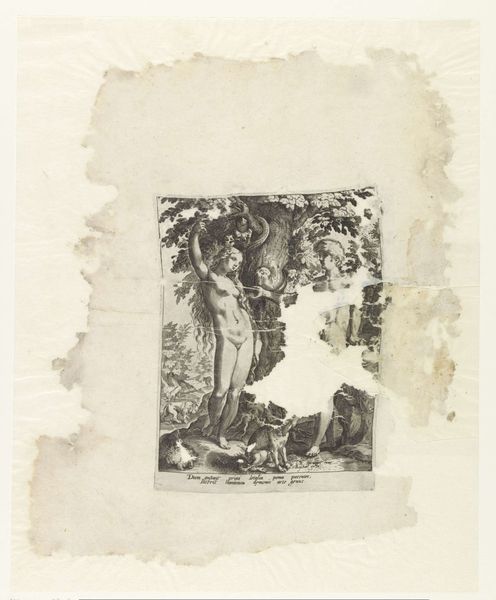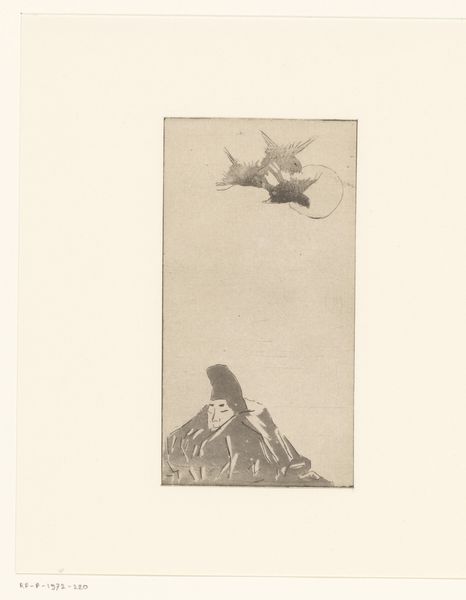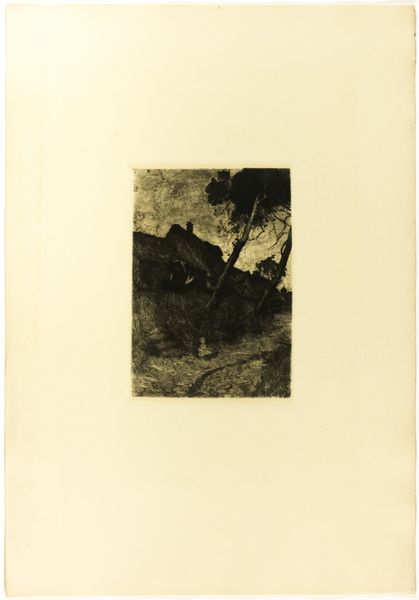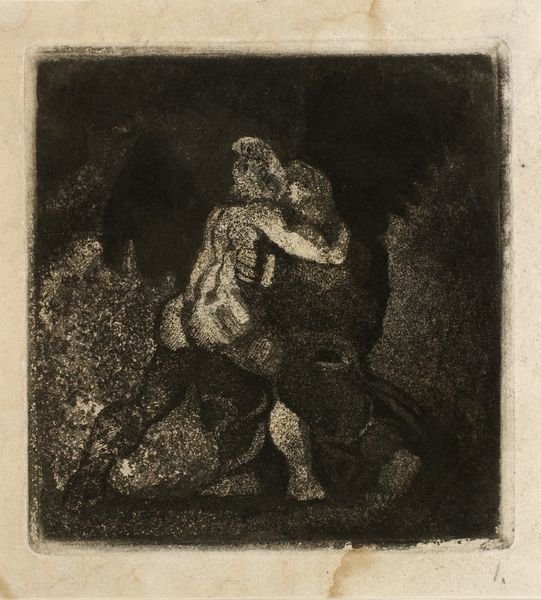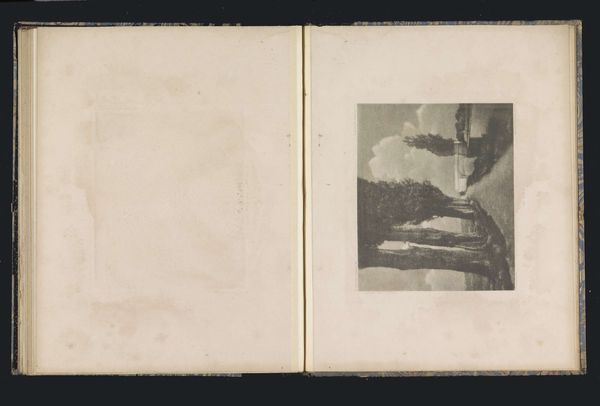
The Vampire of Notre-Dame, plate nine from Le Long de la Seine et des Boulevards Possibly 1890 - 1910
0:00
0:00
drawing, print, etching, engraving
#
drawing
#
aged paper
# print
#
etching
#
old engraving style
#
landscape
#
france
#
symbolism
#
cityscape
#
engraving
Dimensions: 132 × 123 mm (image); 231 × 210 mm (sheet)
Copyright: Public Domain
Auguste-Louis Lepère etched "The Vampire of Notre-Dame" as part of a series along the Seine, featuring a gargoyle overlooking Paris. Gargoyles, symbols of protection and grotesque beauty, were common in Gothic architecture, designed to ward off evil spirits. The vampire figure is a nod to the ancient, often subconscious fears of the unknown. Consider the recurrence of winged, demonic figures throughout history, from ancient Mesopotamian deities to medieval demons. These figures embody humanity’s primal fears, their emotional resonance tapping into our collective psyche. The pensive pose of the vampire connects it to melancholic figures in art, such as Dürer's Melancholia, figures of contemplation who wrestle with the weight of knowledge and the burden of existence. Lepère's vampire invites us to reflect on the cyclical nature of symbols, their ability to resurface, evolve, and take on new meanings, mirroring the anxieties of each age.
Comments
No comments
Be the first to comment and join the conversation on the ultimate creative platform.
